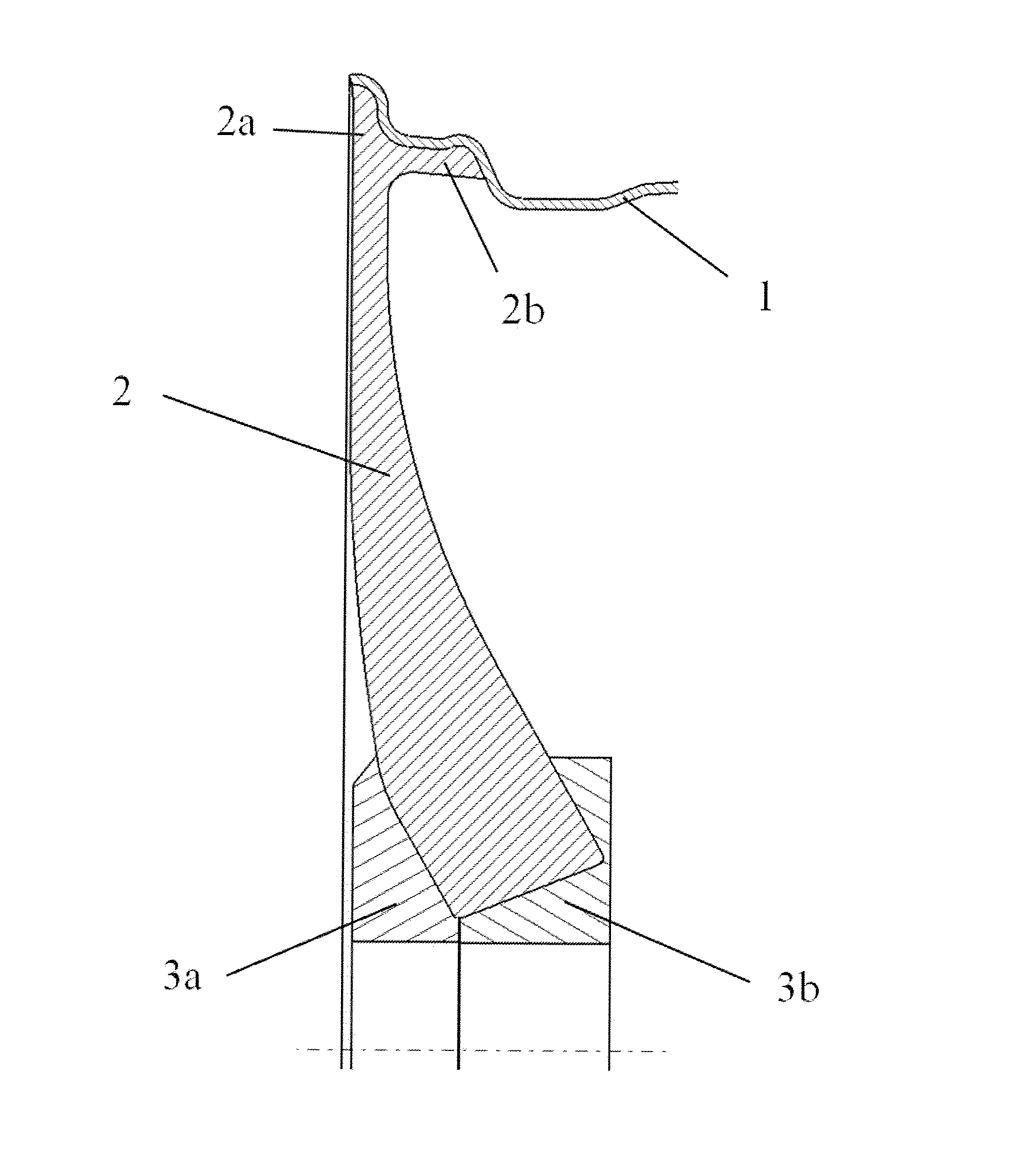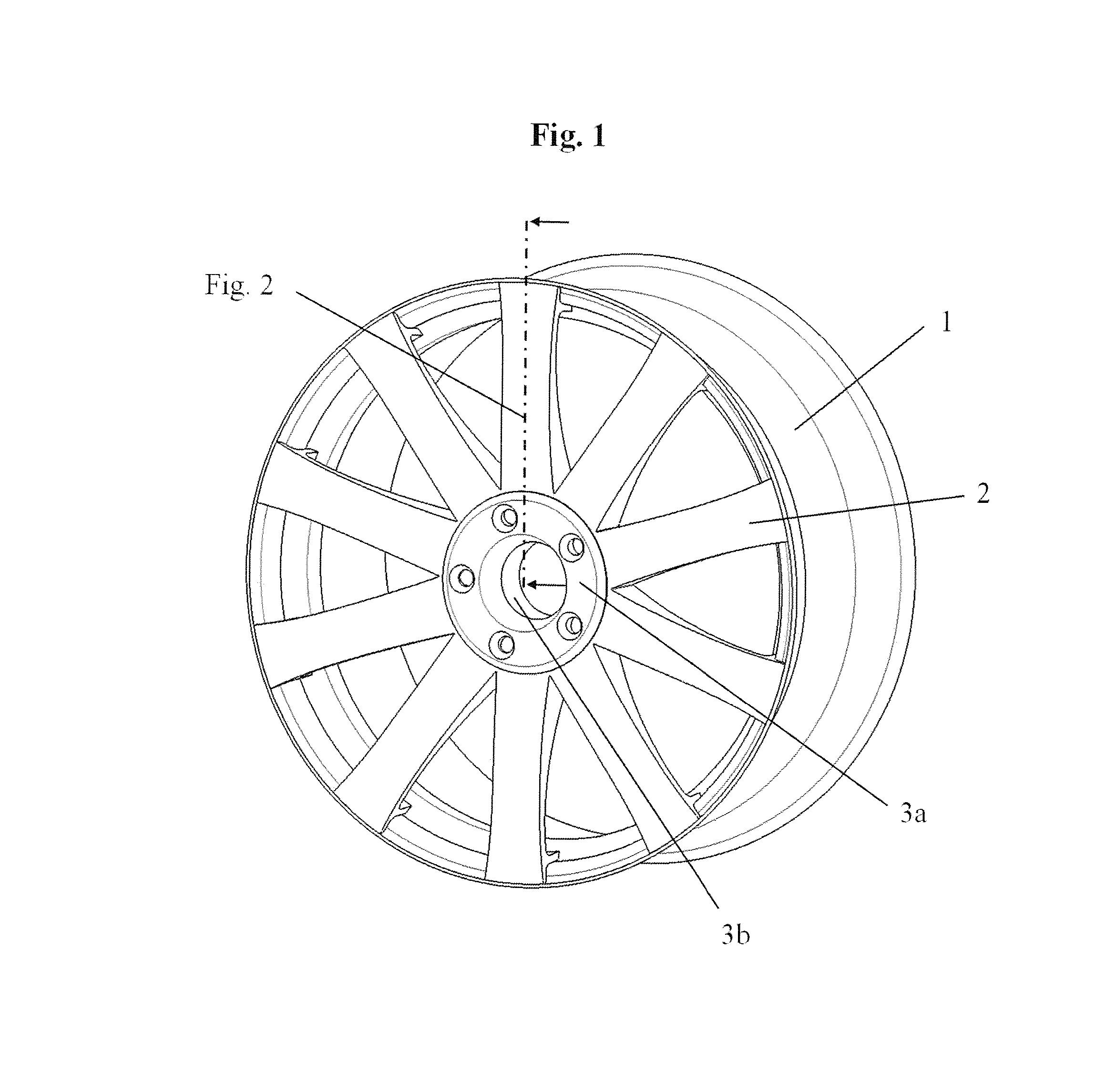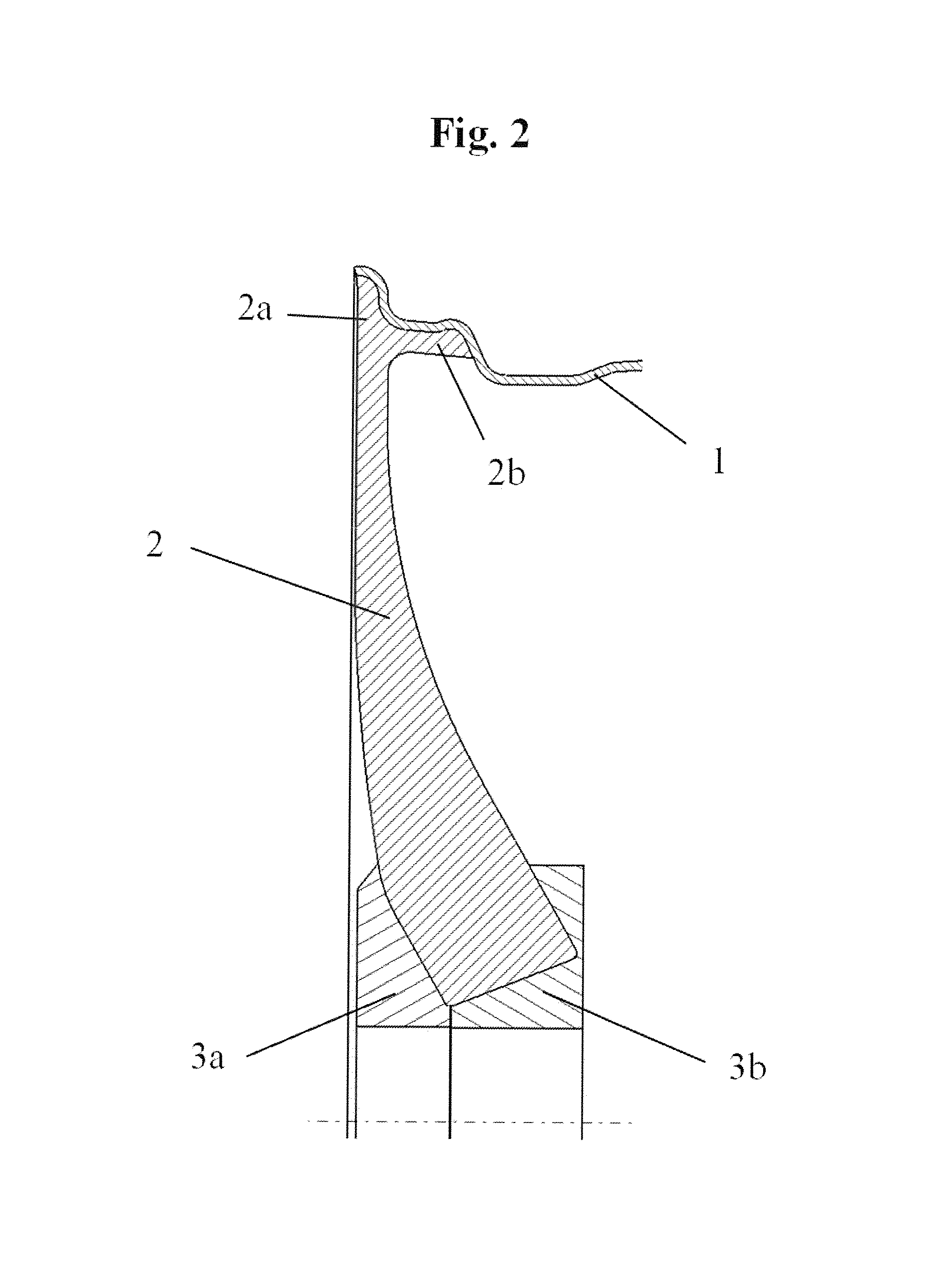Wheel spider with assembled spoke elements and connection of wheel spider to rim well
a technology of spoke elements and wheel spiders, applied in the field of wheels, can solve problems such as not pure decorative elements, and achieve the effect of high design freedom of spoked wheels and high weight-saving potential of wheel spiders
- Summary
- Abstract
- Description
- Claims
- Application Information
AI Technical Summary
Benefits of technology
Problems solved by technology
Method used
Image
Examples
exemplary embodiment 1
According to FIG. 1, FIG. 2, FIG. 3, FIG. 4(a-c), FIG. 5, and FIG. 6
[0039]In the first exemplary embodiment, the wheel spider is made up of individual radial spoke elements (2), which are assembled in the area of the wheel hub. The spoke elements which are assembled over circumferentially directed connecting surfaces in this case form the wheel hub. The molding of the spokes takes place in advance, for example, by means of TFP technology (Tailored Fiber Placement Technology), with which the individual textile strands are made up of a plurality of already dimensioned fiber layers and thus, the unconsolidated final contour can be produced, taking into account the later spoke shape. In this connection, the stratification of the fiber layers may take place differently, for example, in the axial (FIG. 4b) direction or in the circumferential direction (FIG. 4c). The spoke ends connected to the rim well (1) have two separate textile strands, which, on the one hand, run up to the rim flange...
exemplary embodiment 2
According to FIG. 7, FIG. 8
[0040]The second exemplary embodiment differs from the first one to the effect that the individual spoke elements produce a positive-locking, undercut connection to the entire well of the rim well. Here, the spoke end (2b) running to the well is adapted, so that the wall thickness from the rim flange area up to the beginning of the rim well increases markedly and the strap forming the undercut is adapted corresponding to the rim well. This spoke connection makes possible a simplification of the mold by no inserter tool being needed for the undercut formation. The spoke ends (2b) enclosing the rim well are therefore inserted into grooves provided for this after mounting the inner mold. The rim well contour necessary for the braiding process is therefore formed by the inner and outer molds as well as the folded-over spoke ends.
exemplary embodiment 3
According to FIG. 9, FIG. 10
[0041]FIG. 10 schematically shows the joining zones (9) between the individual spoke elements (2), wherein in this case the spoke elements differ in their radial length in the direction of the wheel central axis. Every other spoke thus has a type of recess in the radial direction, after which a stepped wheel hub area forms. The force application elements (3a, 3b) are designed such that axial bulges mesh with the recesses and thus a non-rotatable connection is produced between the spoke elements and the force application elements and rotational forces can be transmitted better. The spoke elements (2) are held in the axial direction by means of the hub parts (3a and 3b).
PUM
| Property | Measurement | Unit |
|---|---|---|
| area | aaaaa | aaaaa |
| shape | aaaaa | aaaaa |
| absorbing forces | aaaaa | aaaaa |
Abstract
Description
Claims
Application Information
 Login to View More
Login to View More - R&D
- Intellectual Property
- Life Sciences
- Materials
- Tech Scout
- Unparalleled Data Quality
- Higher Quality Content
- 60% Fewer Hallucinations
Browse by: Latest US Patents, China's latest patents, Technical Efficacy Thesaurus, Application Domain, Technology Topic, Popular Technical Reports.
© 2025 PatSnap. All rights reserved.Legal|Privacy policy|Modern Slavery Act Transparency Statement|Sitemap|About US| Contact US: help@patsnap.com



